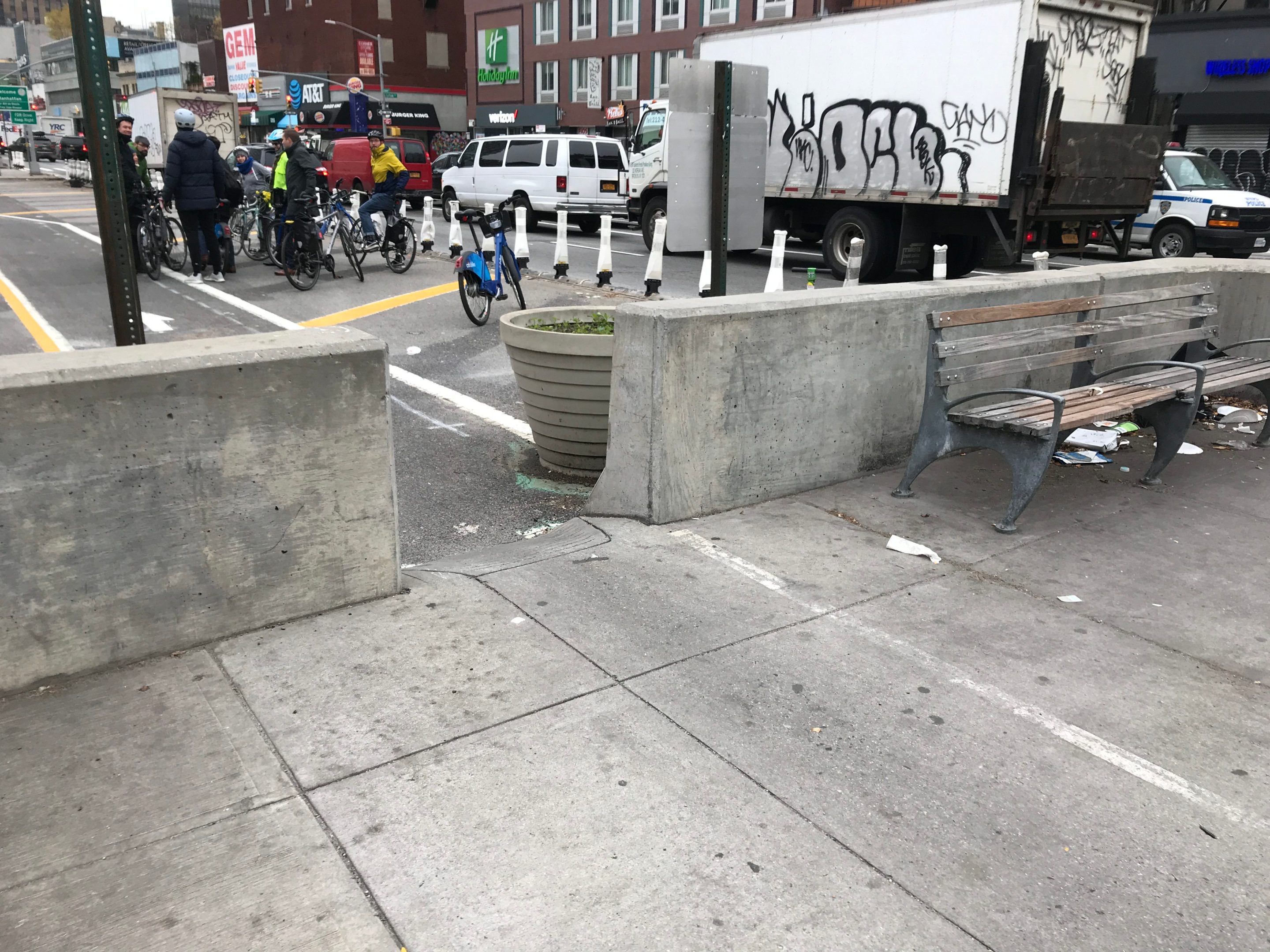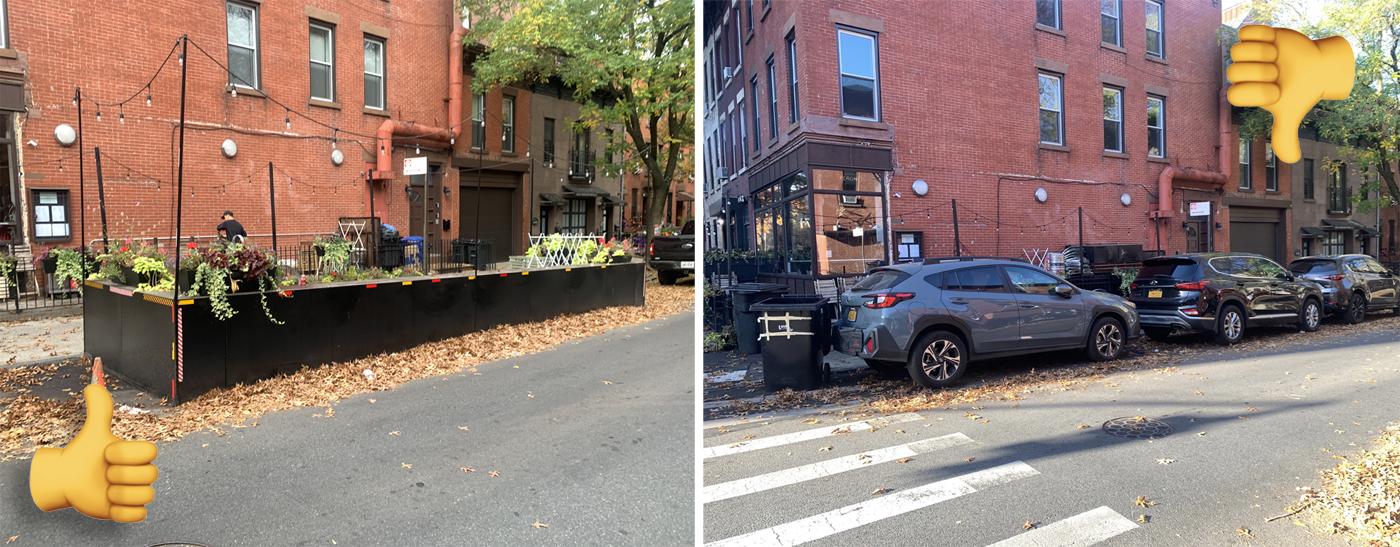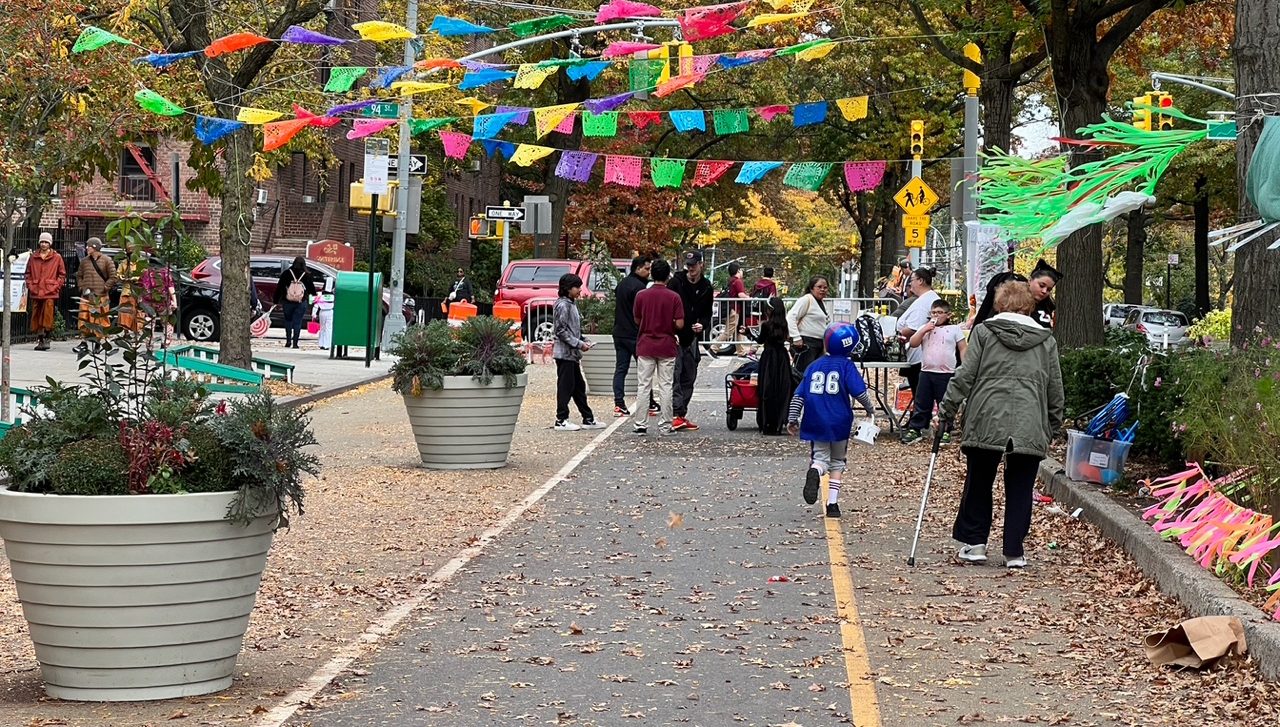First, credit where due: The city Department of Transportation has largely solved the disastrous intersection of Delancey and Allen streets — where its own engineers had famously installed a safety island that made everything worse for everyone (except me because I got to make this cool video).
The island remains a critical part of the two-way Delancey Street protected bike lane — which is a linchpin of the department's effort to mitigate congestion from the 15-month L-train shutdown that begins in April. The agency showed off the lane at a press event/ride Thursday morning and it works, mostly, as promised.
So those are two steps forward. Here's the half-step back: at the Manhattan foot of the Williamsburg Bridge — where 15,000 to 22,000 cyclists are expected to pass every day once the L train is shuttered — riders encounter two problems: pedestrians and a narrow passageway that does not meet national standards.
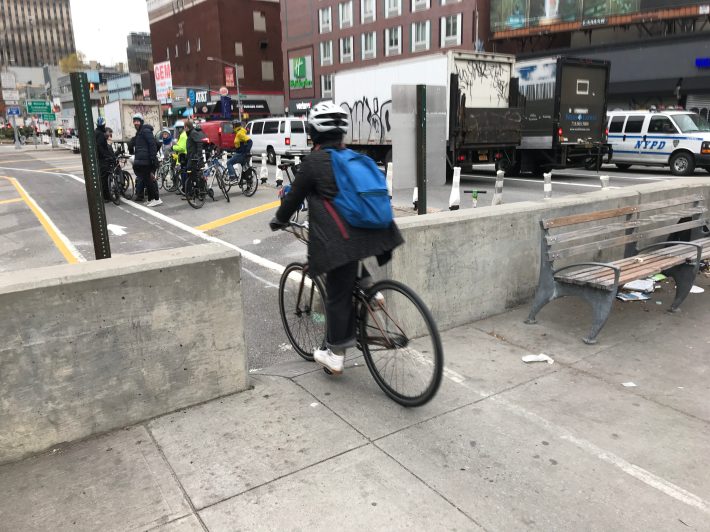
There are signs, but no traffic signal to show cyclists coming off the bridge when pedestrians have a green light as they cross Delancey. Cyclists must always yield to pedestrians, but are more likely to do so if there is a red light telling them to stop because pedestrians are still crossing.
After waiting for the pedestrians, cyclists must now maneuver through the narrow cut through the security wall at the foot of the bridge (photo above) that is not even four feet wide — far narrower than well-established national standards. Riders must slow considerably.
And eastbound riders heading towards Brooklyn must make a sharp, 90-degree turn from Delancey into that entrance area, another cause of concern to the cycling community.
Looks like the @NYC_DOT realized that they couldn't force #bikenyc'er to make a 90d turn off of the w'burg bridge. Now, you have to make one going up. I wish they would redesign the damn bunker!! #ltrainshutdown @StreetsblogNYC @TransAlt pic.twitter.com/nFFLSHefRM
— noel hidalgo • 🗽❤️🔥🚲 (@noneck) November 11, 2018
The overly cozy confines are necessary because the "bathtub" (cyclists call it "the bunker") at the Manhattan end of the bridge is actually an elaborate, reinforced security structure that extends well below the roadbed. DOT's Manhattan Borough Commissioner Edward Pincar said that, despite appearances, workers can't simply cut through it. He also promised that the area would be fixed as part of a larger renovation after L-train service is restored.
Shortcomings aside, on Thursday morning, DOT officials accentuated the positives of the larger Delancey bike network, which now features a protected two-way lane from the bridge to Allen Street (eastbound riders get an additional protected lane between Chrystie and Allen streets) and that repaired safety island at the Allen and Delancey intersection.
Our earlier coverage showed that the island, and the placement of traffic lights, had encouraged drivers to fill the intersection as they waited for a signal to change, but DOT has now changed the signal timing, and removed one signal itself — and the result is that drivers no longer "block the box" (or cyclists heading north on Allen).
See for yourself:

But the island itself is still uninviting for cyclists, who tend to steer around it, into traffic, rather than going up its steep slope (see photo below). DOT says it is continuing to tweak the design and will be installing paint to make the travel lane clearer for everyone. Pincar also said DOT is still working with NYPD to ensure that cops properly enforce restrictions on cars with fewer than three passengers. Currently, the NYPD has said it would pull over cars that violate the HOV-3 ban in a one-block stretch of Delancey — which no one thinks will be sufficient.
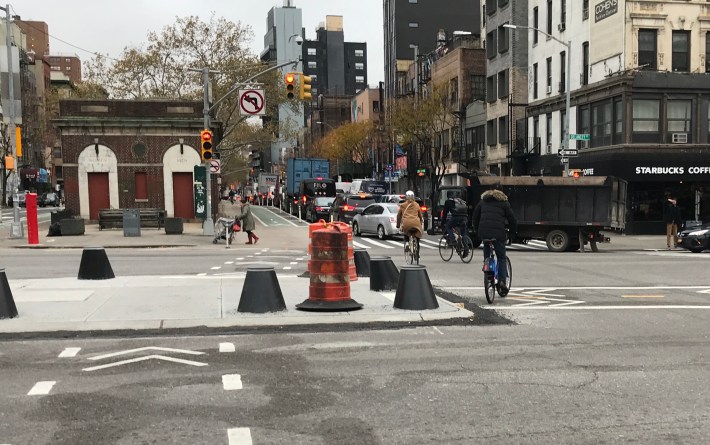
"We are in constant contact with NYPD," Pincar said. "We will make tweaks with them. There are street design changes we are contemplating, including changes on Clinton Street, to help enforcement."
Overall, the work is critical because DOT officials expect the number of cyclists using the Williamsburg Bridge — already the city's busiest — to double or triple from the current 7,300 riders daily when the L train is shuttered between Manhattan and Brooklyn in April.
"Increasing access for cyclists will help make the Williamsburg Bridge a showpiece for how we can and will keep New Yorkers moving during next year's challenging shutdown," DOT Commissioner Polly Trottenberg said in a statement.
